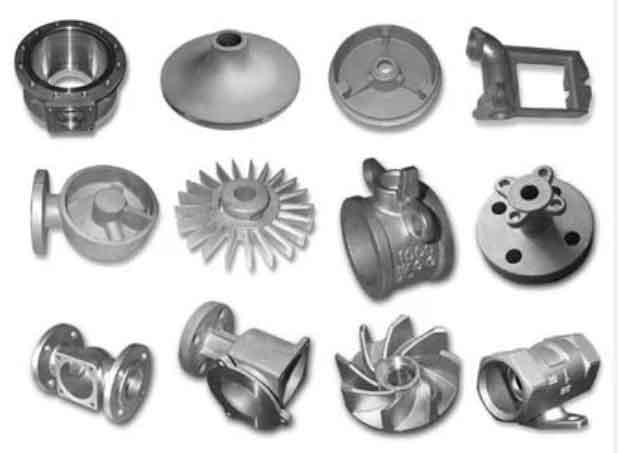Ductile iron castings play a critical role in automotive safety components like clutch pressure plates, where residual stress distribution significantly impacts dimensional accuracy and service life. This study employs ProCAST finite element analysis to investigate temperature fields, solidification behavior, and residual stress formation in GGV30 vermicular graphite iron castings, providing insights for optimizing ductile iron casting processes.

Thermophysical Modeling of Ductile Iron Castings
The pressure plate geometry (Ø215.9mm × 116mm bore) was discretized using tetrahedral elements with local refinement at critical features. The mesh convergence study followed the criterion:
$$ \frac{\Delta \sigma_{max}}{\sigma_{avg}} \leq 5\% $$
where $\Delta \sigma_{max}$ represents maximum stress variation and $\sigma_{avg}$ denotes average stress across elements. Material properties for GGV30 ductile iron casting were implemented using temperature-dependent functions:
| Temperature (°C) | Thermal Conductivity (W/m·K) | Specific Heat (J/kg·K) | Young’s Modulus (GPa) |
|---|---|---|---|
| 20 | 36.5 | 460 | 169 |
| 600 | 32.1 | 620 | 152 |
| 1200 | 28.7 | 790 | N/A |
Solidification Kinetics and Stress Formation
The modified Johnson-Mehl equation describes solidification in ductile iron castings:
$$ f_s = 1 – \exp\left(-k\left(\frac{t}{\tau}\right)^n\right) $$
where $f_s$ is solid fraction, $k=3.2$, $n=1.8$ for vermicular graphite formation, and $\tau$ represents characteristic solidification time. Thermal stress development follows the viscoplastic constitutive relationship:
$$ \dot{\epsilon}_{ij}^{vp} = \frac{3}{2} \frac{\dot{\bar{\epsilon}}^{vp}}{\bar{\sigma}} S_{ij} $$
where $S_{ij}$ denotes deviatoric stress tensor and $\dot{\bar{\epsilon}}^{vp}$ represents equivalent viscoplastic strain rate.
Process Parameters and Boundary Conditions
The ductile iron casting process was simulated with the following parameters:
| Parameter | Value | Unit |
|---|---|---|
| Pouring Temperature | 1419 | °C |
| Mold Initial Temperature | 25 | °C |
| Interfacial Heat Transfer Coefficient | 500 | W/m²·K |
| Filling Time | 7.5 | s |
Residual Stress Distribution Analysis
The simulated residual stress field revealed characteristic patterns in ductile iron castings:
$$ \sigma_{res} = \int_{T_{solidus}}^{T_{room}} \alpha(T)E(T)\Delta T(T) dT $$
Key findings include:
- Maximum tensile stress (360 MPa) at riser-connected lugs
- Radial stress gradient from 280 MPa (inner bore) to 120 MPa (outer edge)
- Compressive stress (-85 MPa) at central web regions
Deformation Characteristics
The z-axis displacement field followed a parabolic distribution:
$$ w(r) = -0.0135 + 0.00022r^2 $$
where $r$ represents radial position (mm). This caused 0.0216mm outward displacement at periphery and 0.0164mm inward deformation near the bore, exceeding flatness tolerance requirements for clutch applications.
Process Optimization Strategies
For improved ductile iron casting quality:
- Implement stepped cooling: $$ T_{cool} = \begin{cases} 650°C & t \leq 1200s \\ 450°C & t > 1200s \end{cases} $$
- Modify riser geometry: $$ V_{riser}/V_{casting} \geq 1.8 $$
- Apply post-casting stress relief: $$ \sigma_{relief} = \sigma_0 \exp\left(-\frac{Q}{RT}\right) $$
Conclusion
This numerical investigation demonstrates that ductile iron casting processes generate complex residual stress patterns significantly influenced by geometric features and cooling conditions. The methodology enables prediction of stress concentrations exceeding material yield strength (GGV30: 310 MPa) in critical areas, providing a foundation for optimizing automotive casting components. Future work should incorporate microstructure-property relationships specific to vermicular graphite formation during solidification.
